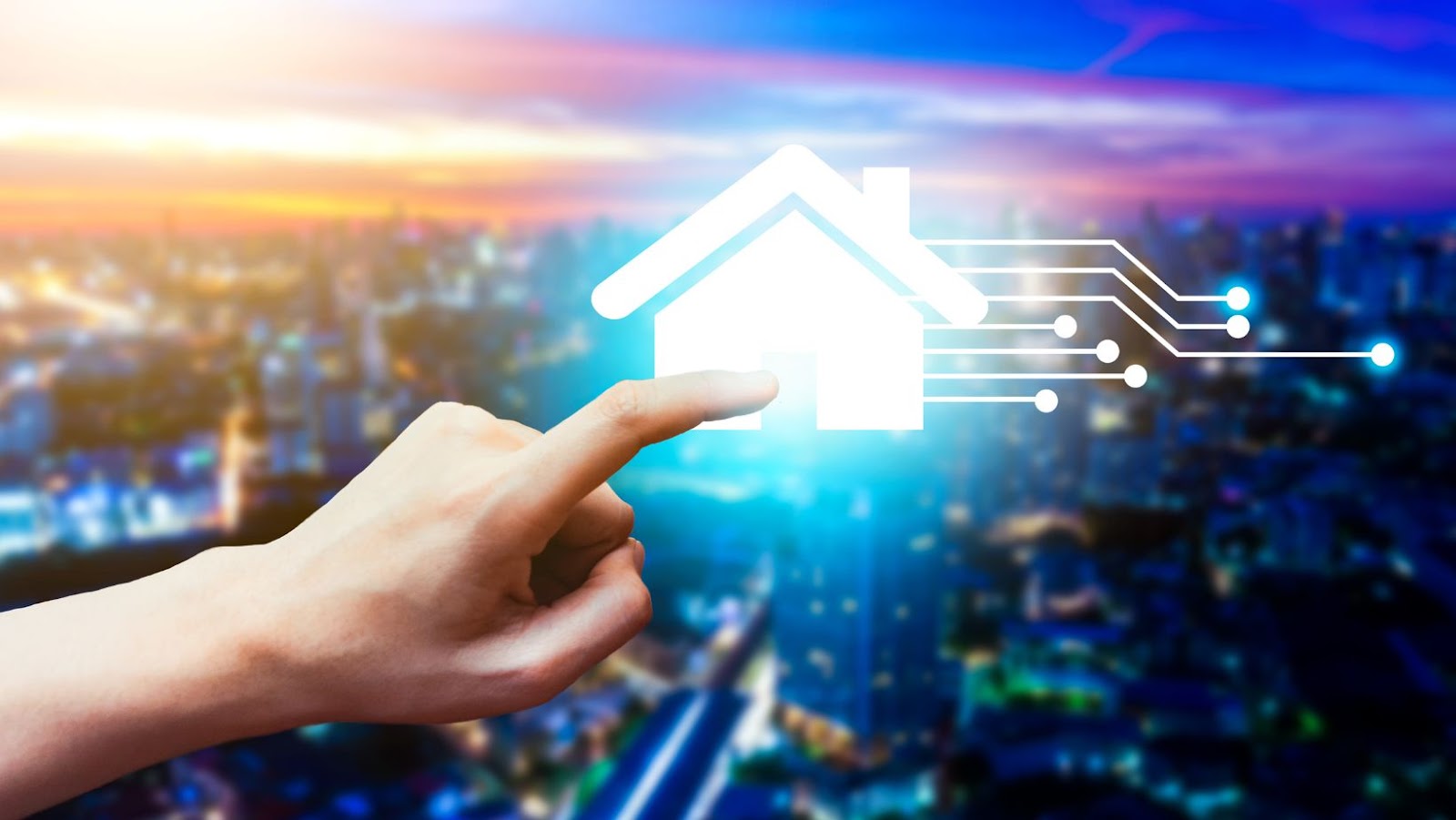Smart street lighting systems are a contemporary lighting system designed to provide energy efficient lighting while also meeting the needs of citizens. It is an integrated system that can be connected to the internet and monitored remotely, thus providing a secure and comfortable environment. Smart street lighting systems provide several features such as automated lighting control, energy conservation, and safety and security. Let’s take a closer look at the features of a smart street lighting system:
- Automated lighting control
- Energy conservation
- Safety and security
What is smart street lighting system
A Smart Street Lighting System (SSLS) is a modern design that utilizes sensing, communication, and control technologies to optimize energy efficiency and improve safety for pedestrians and drivers. The two primary objectives of an SSLS are to decrease energy consumption through Automatic Demand Response (ADR) by dimming or turning off lights when no one is present on the road; and to enhance security by enabling sensors in the system to detect incidents and take necessary actions such as sending alerts or increasing lighting levels.
The components commonly included in an SSLS include:
- Light sources
- Power supplies
- Control systems
- Communication networks
- Smart poles with embedded outdoor sensors
- Centralized management systems
- Software suites
Depending upon user requirements or preferences, these components can operate together or independently at different points in time. For instance, when no movement is detected on a road for an extended period of time, the power supply to the light sources may be shut down completely. On the other hand when motion is detected again; normal lighting settings can be resumed automatically depending upon service rules specified by end-users. Additionally many SSLS systems utilize a variety of sensors including light sensors that can measure real-time illuminance levels of street lights and trigger an increase/decrease in luminosity accordingly.
Benefits
A smart street lighting system can bring numerous benefits to a city or neighbourhood. These systems can dramatically reduce energy consumption and carbon emissions, while also providing a safer and more secure environment. Smart lighting systems often come with features such as motion sensors, timers, and automatic dimming capabilities, making them even more efficient.
This article will explore the specific benefits of a smart street lighting system, such as:
- Energy savings
- Improved safety
- And more
Improved Safety
Smart street lighting systems are designed to improve safety in many ways. By providing bright, uniform light and covering large areas, they drastically reduce safety risks due to dim or uneven lighting. This can be particularly beneficial for pedestrians who need good visibility during the night.
Furthermore, some smart street lighting systems are integrated with sensors that detect motion or sound and automatically adjust the brightness or color of their lights in order to better illuminate potential threats. Additionally, these systems can be connected to other types of surveillance equipment and monitored in realtime by authorities, further bolstering safety.
Finally, another benefit of a smart street lighting system is that it can be programmed to dim when there is no activity on the streets or when daylight is already abundant in order to conserve energy and reduce costs.
Reduced Energy Consumption
Smart street lighting systems are designed to save energy and reduce light pollution by minimizing energy consumption. Through its integration with intelligent sensors, connectivity and analytics, the system ensures that only the exact amount of lighting needed is used. This helps to regulate energy consumption in an efficient way.
When motion is detected at a specific location, the adjacent street lights can be triggered on automatically to provide illumination and security to the walking commuters or drivers travelling on that road. This feature allows for reduced energy consumption since no unnecessary lights will be kept on after sunrise or during extended hours of low activity.
Additionally, instead of having constant light, some systems are configured so that illuminance levels decrease as ambient light increases from dusk until dawn when total darkness is needed more than brighter lights. Dimming down drastically reduces electrical bills in a big way – only 50 percent is consumed when around 75 percent dimming of street lights occur at night when visibilities are generally lower due to lack of sunlight.
Cost Savings
One of the most important benefits of a smart street lighting system is the potential for cost savings. By utilizing sensors, light intensity can be reduced in areas with low traffic during off-peak hours, resulting in significant energy savings. Additionally, since most systems leverage existing power poles and other infrastructure, there is little to no need for expensive groundwork. This allows municipalities to deploy such systems at minimal costs.
Additionally, money can be saved through more efficient maintenance processes enabled by connected streetlights. By providing real-time information on the status of lighting systems and warnings when maintenance or replacement is necessary, costly traditional inspection practices can often be eliminated. For example, predictive analytics tools embedded in some smart lighting systems might monitor performance parameters such as luminescence levels or heat dissipation and notify personnel when attention needs to be paid to certain components.

Components
A smart street lighting system is becoming increasingly popular in urban areas as it enhances safety, improves visibility, and helps people save energy. Such a system is composed of several components, the most important of which are the lights themselves, a power supply unit, remote control and monitoring systems, and software for data analysis.
This section will focus on each of these components in more detail:
- Lights themselves
- Power supply unit
- Remote control and monitoring systems
- Software for data analysis
Sensors
Sensors are an essential component of a smart street lighting system. They detect the presence of pedestrians, bicyclists, and other vehicles and use the resulting data to automatically adjust the brightness and energy consumption of a street light accordingly. Sensors are adjustable and can be used to respond to seasonal changes or events in an area such as an increased use during peak hours.
The different kinds of sensors used in these systems include:
- Motion sensors
- Pressure transducers
- Room temperature sensors
- And others.
Smart lighting systems can also connect with other types external systems like weather stations or traffic signals through wireless communication networks such as LoRA or NB-IoT. These features enable the smart lighting systems to populate more comprehensive data about urban areas for researchers in fields like urban planning or public safety.
Lighting Controls
Lighting controls are an essential component of a modern smart street lighting system, allowing for automated lighting schedules, ability to make reactive changes to lighting levels and for remote control and monitoring capabilities.
The two main types of lighting controls are time-based dimmers and sunrise/sunset dimming. Time-based dimmers allow you to set specific times of the day when the lights should be turned on and off. This can provide energy savings in areas that don’t need to be illuminated after certain hours or when the solar-powered entry lasts just a few hours. It also ensures that areas with low foot traffic get the same amount of light as those with higher pedestrian density. Sunrise/sunset dimming provides an automated level of lighting intensity controlled by RGB values, which match the natural rise and fall in ambient lighting levels throughout the day.
In addition to timing features, there are several other features that can be integrated into control systems for intelligent street lighting:
- Acoustic analysis – Allows for differentiating background noise from people talking or footsteps, improving accuracy of data collected
- Image recognition – Detects if a person is present in an image taken from camera footage, allowing for better security management
- 3D modelling – Enables visualisation of data collected from smart sensors and feeds updates into system models
- Lux measurement – Monitors how much light is actually released from LED lamps at different times during day/ night cycle
- Motion sensors – Detects movement within a designated area at predetermined distances
Network Infrastructure
Network infrastructure is a key component of smart street lighting systems and consists of a range of components and connections that allow for effective management of the lighting network. It includes communications protocols, hardware, such as remote lighting control panels, sensors, routers, switches and relays; application servers; databases; acts as a communication interface between the various nodes in the network.
The communications protocols used by smart street lighting systems are typically based on open standards such as Internet Protocol (IP) or Cellular Network (3G/4G), offering both secure connections and compatibility with existing networks. This connection facilitates monitoring data and remote programming across the network to be able to improve the level of service delivery by optimizing power supply while meeting customer requirements.
The hardware components in smart street lighting systems enable light levels at each lamp post to be controlled remotely. The system monitors each lamp’s performance characteristics in real time including luminosity, temperature, failure rate and energy use efficiency. The controllers enable dimming modes for increased energy savings or full illumination for specific needs. Additionally, these components also allow individual lamps to be managed from a central office via secure internet connection without having to send staff out into the field for maintenance work.
Finally, these components also include necessary software applications that provide mapping capabilities allowing users to better visualize the environment where these lights operate and monitor their performance from any location. These features integrate different data sources into an intuitive user-friendly interface that can be accessed on any device connected to the internet through an app or web browser, allowing users to have complete command over their smart street lightning systems at all times.

Applications
Smart street lighting systems has numerous applications that make it a great choice for cities and towns. It can help reduce energy costs, improve public safety and security, and provide better lighting coverage for roadways, parks, and other open spaces. Additionally, the automated control systems provide the ability to dim or brighten the lights in response to events or environmental changes.
Let’s take a closer look at the features of a smart street lighting system and the various applications it can be used for:
Automated Dimming
Automated dimming is a key feature of many smart street lighting systems. Dimming is a process that adjusts the level of illumination for a light source based on the time of day, in order to save energy and improve the local lighting environment. For instance, at night when there is less traffic on roads, the lights will dim to reduce energy consumption and light pollution. Automated dimming also comes with preset schedules, allowing administrators to adjust brightness levels according to specific times in order to save energy during peak hours.
Furthermore, automated dimming functions can be tailored to meet specific needs with some smart street lighting systems. For example, special occasion events such as Christmas or New Year’s Day can be programmed into automated scheduling, enabling administrators to adjust lights accordingly in order to create the desired atmosphere or highlight points of interest in the surrounding area. Additionally, sensors could pick up an increase in evening foot traffic and signal an automatic dimming process even when there already exists a pre-programmed schedule in place. In addition, setting brightness thresholds for particular locations can become very useful when it comes optimising road safety and improving visibility without over-illumination which would otherwise result in unnecessary wastes of energy and light pollution.
Automated Lighting Scheduling
Smart street lighting systems are equipped with sensors which can detect the incoming light from the sun. This allows the system to adjust the power of each light in response to natural daylight, keeping places appropriately lit in a much more efficient manner.
Automated Lighting Scheduling makes it possible for street lights not to switch on until darkness falls or sooner, and switch off as soon as dawn breaks. This ensures that streets and intersections remain lit only when needed, thus evening out energy consumption and cost of electricity without reducing public safety. Automated scheduling also makes it easier for stakeholders to fine-tune their energy-saving parameters afterwards.
The automated scheduling feature utilizes sensors designed to measure incoming sunlight intensity levels, length of daylight hours (or night time hours) while establishing the appropriate levels of power required, compared to fixed dim time schedule issued by local authorities or geographical areas. This technology is able to synchronize street lighting with sunrise/sunset times for multiple locations worldwide with its programmed geographic coordinates, hence providing an effortless electricity bill savings potentials over traditional dim timelines offered by local power provider companies.
Automated Maintenance
Smart street lighting systems are designed to offer automated maintenance, drastically reducing the amount of manual effort required for installation and upkeep. Any maintenance or service needed will be automatically rolled out and scheduled by the system when it identifies that a part requires replacement. It also offers the ability to utilize real-time monitoring services to report any issues while they happen.
This helps create a more efficient and cost-effective light management solution by allowing proactive preventative measures against malfunctioning street lights. The automated service capabilities reduce labor costs significantly, as someone will no longer need to take long journeys from site-to-site in order to check if all the lights are operational.
Conclusion
In conclusion, a smart street lighting system is a viable and cost-effective solution to improve public safety, manage traffic, reduce energy consumption, and make cities more livable. The features of a smart street lighting system go far beyond traditional streetlighting and are becoming increasingly more popular as cities look for ways to reduce costs while improving the environment.
Additionally, with increasing acknowledgement that human well-being is integral to city development, smart street lighting systems provide the means to foster greater connection and identity in urban public spaces while providing the promise of better security and environmental sustainability.




